From the moment they open their eyes until they go to bed, youth nowadays have thousands of choices to make. Although, compared to decades ago, the times they are living in are full of opportunities for them, there are also many challenges, uncertainties, and rapid transformations to face. The rise of AI, the numerous conflicts around the world, and the funding cuts in the humanitarian sector have led to acute inequalities and complex crises, at the same time as significant innovations and a powerful shift in how young people define leadership, change, and justice. As we mark International Youth Day on August 12, let’s take a moment to read more about the challenges and opportunities they face, and how they can become real catalysts of change.
Key Takeaways:
- The biggest challenge for youth in 2025 is the lack of trust from older generations.
- Day-to-day challenges are, according to experts, unemployment, climate instability, economic uncertainty driven by AI, and increasing geopolitical conflict.
- Opportunities lie in leading innovation, shaping inclusive governance, driving climate action, and building careers in emerging digital and green economies.
- 21st-century education and future-ready skills, access to digital tools, data, and infrastructure, mentorship, technical guidance, and peer learning are among the most critical areas in 2025 to unlock youth-led innovation.
- To empower youth, public agencies and private donors must co-opt young people into governance: on boards, in program design, in funding implementation, and across policy frameworks.
DevelopmentAid: What are the biggest challenges and greatest opportunities for youth in 2025?

“In 2025, youth are not just navigating crises; they are inheriting a world they did not break but are expected to fix. From war-torn cities to climate-vulnerable islands, young people are enduring the fallout of protracted conflicts, forced displacement, and collapsing social safety nets. Many are growing up without homes, citizenship, or peace, yet are still expected to be resilient, entrepreneurial, and hopeful. Inequality is rising, mental health support is scarce, and digital access remains deeply uneven. AI threatens to replace their jobs before they even enter the workforce, widening the gap between the digitally fluent and digitally forgotten. And yet, youth are flipping the narrative. They are launching climate tech from Nairobi, documenting war crimes from Gaza to Sudan, mobilizing indigenous land rights in the Amazon, and rewriting economic rules from grassroots cooperatives in the Caribbean. They are less interested in squeezing into broken systems and more focused on building new ones that are rooted in equity, healing, and sustainability. What makes this generation powerful is not just their connectivity, but their collective clarity. Justice must be intersectional, leadership must be shared, and true change must transform not only policies and institutions but also mindsets, values, and relationships. The biggest challenge in 2025 is institutional inertia. The biggest opportunity is a generation that is ready to build a more just and compassionate world with urgency, imagination, and heart.”
See also: Technology’s impact on employment: benefits and drawbacks
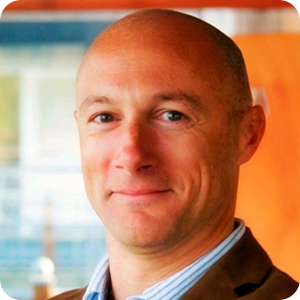
“Young people are determined to build a better present, not only a brighter future. In 2025, they have real opportunities to drive change by promoting peace through dialogue and community engagement, using AI safely and effectively in work and study, integrating its use instead of substituting other complementary tools, and contributing to society through meaningful, trust-based participation in civic and political life. The challenge lies in correctly identifying and actively diminishing the barriers that prevent them from doing so; for instance, they are pushed back by disillusionment with political systems, inequality, and exclusion. However, I believe and have personally noticed that where there is space for real agency, connection, and learning, young people are ready and keen to lead.”
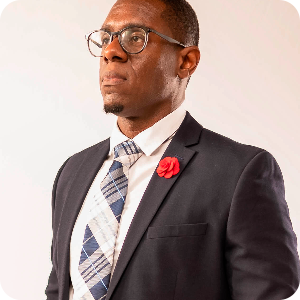
“In 2025, youth empowerment stands at a critical juncture. We’ve evolved from seeing youth as problems to be fixed, to recognizing their right to participate in shaping the world around them. Yet, despite this progress, access remains unequal. Too often, a narrow profile of youth dominates key spaces and conversations. One of the biggest challenges, therefore, is ensuring inclusivity across all demographics, including those marginalized by geography, ability, or socio-economic status. To unlock the full potential of young people, we must invest in capacity-building that enables them to meaningfully engage with complex issues. This includes not only skills’ development but also providing resources and reshaping how we engage youth in decision-making processes. Maybe we need to revamp the decision-making process itself! At the same time, young people have unprecedented opportunities through technology and globalization. They can organize, create, and lead in ways never before possible. In 2025, youth no longer need to wait for a seat at the table. Instead, they can build their own, lead with results, and demand recognition as equal partners in development.”
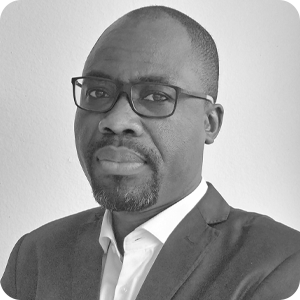
“In 2025, the world’s young people face multidimensional challenges: unemployment and economic insecurity remain a concern, even among young graduates, despite their improved training. Traditional sectors are stagnating, while emerging professions, particularly in deep tech, AI, blockchain, robotization and the blue and green economy, require skills that are still inaccessible to many young people. Access to quality education remains unequal, widening the gap between connected urban areas and rural or marginalized areas and the cost of higher education is a further barrier to youth emancipation. In addition, economic uncertainty, climatic crises, and social tensions weigh heavily on the mental health of young people, particularly in urban areas, where anxiety, depression and suicides are on the rise. In some regions, notably West Africa, the Middle East and Ukraine, protracted political conflicts are forcing many young people onto migratory routes, depriving them of development opportunities. However, despite the context, opportunities are emerging as well. Young people are increasingly investing in the fields of innovation – sustainable agriculture, edtech, inclusive fintech, renewable energies – supported by incubators, public policies and seed funds. New technologies (AI, blockchain, cybersecurity) represent a lever for the future for those who succeed in training themselves. Education is gradually becoming more flexible and hybrid, incorporating the practical skills (soft skills, digital skills, life skills) that facilitate professional integration. In addition, young people are increasingly recognized as being key players in peace-building and community resilience, through initiatives for dialogue, reconciliation and social cohesion in fragile areas. In short, while the challenges are many, young people represent a major force for transformation towards a more inclusive, innovative and sustainable future.”
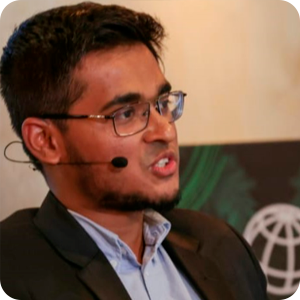
“In 2025, young people face a daunting convergence of crises, including climate instability, economic uncertainty driven by AI and stagnant growth, and increasing geopolitical conflict. These challenges create significant barriers to securing stable livelihoods and a sustainable future. However, this generation, the most interconnected and educated in history, is uniquely positioned to drive change. The primary opportunity lies in harnessing their digital fluency and global consciousness to build transnational movements and develop innovative, localized solutions. My own work with Eminate, empowering communities from Bangladesh to Uganda with clean energy solutions, demonstrates this. By leveraging global networks, crowdfunding and the power of the internet, we can implement grassroots projects that lead to tangible action and demonstrate a new, youth-led model for sustainable development. This proactive, solutions-oriented approach is critical for navigating the complexities of the current global landscape.”
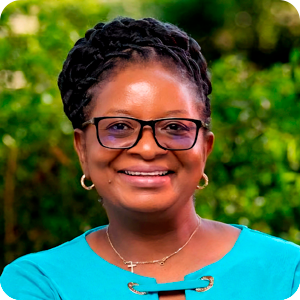
“As we mark International Youth Day 2025, one of the most overlooked but urgent challenges facing young people, especially in Africa, is the weak transfer of intergenerational knowledge. While today’s youth are digitally connected and formally educated, they are increasingly disconnected from traditional wisdom and local strategies for resilience, particularly in the face of climate change. For generations, African communities adapted to changing climates through indigenous knowledge systems rooted in the close observation of nature. I remember my mother pointing out certain insects and saying, “this year we will have a lot of rain.” That was weather forecasting, key in climate adaptation. But it was never written down, neither by her nor me. These forms of climate adaptation knowledge are disappearing, undocumented and unrecognized by modern systems. As young people are called upon to lead climate action, they often do so without access to these ancestral tools. The dominance of foreign research models and the undervaluing of local knowledge has weakened community-based adaptation. To address this, we must invest in documenting oral knowledge, promote indigenous climate practices, and bridge generations. This is not just about heritage, it’s a survival strategy. Climate resilience must begin with rooted wisdom. A generation without roots cannot adapt.”
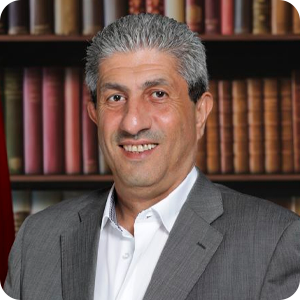
“In every workshop I’ve led – in Syria, Lebanon, Iraq, or Jordan – I’ve met young people with bold ideas but limited means. In 2025, the greatest challenge that youth face isn’t a lack of creativity – it’s a lack of access to finance, decision-making, and decent work. But I’ve also seen something powerful – this generation is not waiting for permission. They are building solutions from the ground up, often in the toughest environments.”
DevelopmentAid: What investments are most vital in 2025 so that youth can lead innovation in climate resilience, peacebuilding, and inclusive economic recovery?

“Education, be it formal and non-formal, is the foundation for strengthening and unfolding young people’s potential. Youth work, vocational training, inclusive, free-of-charge education systems, and access to unbiased, non-judgmental information and counselling create the conditions for more participation, innovation, and social inclusion. Investing in the education and empowerment of young women is especially vital: it delivers long-term benefits in resilience, peace, and economic transformation. The evidence is clear and unambiguous: when young women thrive, entire communities move forward.”

“While financial resources are important, they are not the most critical investment for unlocking youth-led innovation in climate resilience, peacebuilding, and inclusive economic recovery in 2025. Too often, funding is available, but stakeholders, especially young ones, lack the support to use it effectively. The most transformative investments are time, technical guidance, and access to meaningful opportunities. This can be summed up in one word: mentorship. Youth are full of bold ideas and energy, often unencumbered by bureaucracy. But they need support to navigate systems that can otherwise become barriers. Mentorship helps to bridge that gap by offering guidance, helping youth to refine ideas, build implementation strategies, and connect to relevant networks. Opening doors to technical expertise, peer learning spaces, and platforms for visibility allows youth to innovate with impact. These investments of time, trust and guidance are often more powerful than money alone. When they are combined with financial and technological resources, the results are not only innovative but sustainable and scalable. Investing in people and relationships is what truly unlocks youth potential for their benefit and the resilience of the communities they serve.”

“Unlocking youth-led innovation in 2025 means doing things differently. It is not about one-off workshops or consultations. It means long-term investment in young people’s ideas, leadership, and ability to take action. Young people need consistent funding, meaningful roles in decision-making, and safe environments where they can test ideas, make mistakes, and grow. In the Caribbean and across the Global South, youth face serious challenges, including unemployment, migration pressures, conflict, and climate threats. Many have solutions but lack access to the systems that hold resources and power. Supporting youth leadership in these contexts is not optional – it is essential. Young people are already contributing to peacebuilding, climate action, and economic recovery. What they need is not more speeches about their potential, but the space and support to lead real change. This means backing youth-led organizations, community-based programs, and peer learning networks. The most important investment is not just financial. It is about shifting attitudes, building trust, and creating systems that value young people as partners. When development actors treat youth as co-creators, not just participants, the results are more inclusive, resilient, and sustainable. The solutions are there, what is needed is the courage to follow their lead.”

“To unlock youth-led innovation for climate resilience and inclusive economic recovery, the most critical investment is in targeted capacity building. This is how a strong foundation is built for real action. While passion is abundant, technical and project management skills are essential to turn ideas into viable solutions. Generic programs are insufficient; we need focused training that equips youth with the practical expertise to lead. My experience of designing and delivering specialized training – from solar installation for technicians in Tonga with the Department of Energy to renewable energy fundamentals for the SDG7 Youth Constituency and grassroots organizations in Burundi and Myanmar – highlights this need. These initiatives build a foundation for sustainable, locally-led projects. As an IRENA I-ACT Educator, I am committed to scaling this model, which empowers young innovators to design and implement climate solutions like solar-powered schools and agricultural processing units, directly fostering both climate resilience and economic opportunity.”

“People with an emotionally qualitative personality – people with a genuine care and understanding of each other – are more likely to succeed within innovative business based on personality traits. A kind, caring personality means thoroughness and an understanding of how others feel and what they believe in; it means an understanding of how failure is an evident part of life, also within business and innovation; it creates a thriving environment for a specific agenda.”

“To unlock youth potential, we must shift from programs to ecosystems designed and built with youth. Investments in climate-smart enterprises, digital and vocational skills, and mental health-informed entrepreneurship are no longer optional – they’re essential. These tools help youth to transform frustration into innovation, especially in fragile regions.”

“To meet the climate, social, and economic challenges, a number of strategic investments are needed in 2025 to unleash the full innovative potential of young people.
- 21st-century education and skills. Training young people with the skills of tomorrow is essential. This not only includes mastering green skills (regenerative agriculture, renewable energies, circular economy) but also access to climate and social entrepreneurship programs from secondary school. Bootcamps, technical schools and modules focusing on critical thinking, negotiation or collaborative leadership are particularly useful in peace-building contexts. To this could be added the ability of young people to learn continuously in a context that features volatility, uncertainty, complexity, and ambiguity (VUCA) and is also brittle, anxious, non-linear, and incomprehensible (BANI). Life skills in a VUCA context will help young people to adapt their strategies in the face of the world’s growing instability, and BANI training will help them to better understand human reactions (fear, anxiety, paralysis) and adapt social, managerial or political responses.
- Impact financing and youth entrepreneurship. The lack of capital remains a major obstacle. There is an urgent need to invest in seed funds, targeted microcredit and grants for prototyping young people’s climate projects. This funding must be accompanied by decentralized local innovation labs with strong local roots in rural and urban areas.
- Access to technological, data and digital infrastructures. Access to emerging technologies, structured or unstructured open data and digital infrastructures could be identified as a key investment, as innovation cannot emerge without access to information, tools and connectivity. This type of investment could include coworking spaces, maker spaces, fab labs, resilient third places for young innovators in outlying regions, affordable internet access, open data sensors (for weather, air quality, natural resources), and partnerships with the private sector to provide young people with equipment (computers, smartphones, solar kits).
- Peace, dialogue, and social cohesion. Investing in community centers for mediation, collective memory or restorative justice is essential. Inter-ethnic leadership programs and youth-led citizen media also strengthen peace.
- Governance and political participation. Finally, enabling young people to participate in decision-making through consultative councils, participatory budgets and training in advocacy and climate diplomacy is a lever for transformation and sustainable stability. Setting up a digital platform for citizen participation could be an excellent strategic approach, along the lines of the Decicim platform, an open-source digital platform designed to promote participatory democracy and citizen involvement in public decision-making. It is used by cities, local authorities, organizations and institutions to structure and facilitate participatory processes.”
DevelopmentAid: How can development agencies shift from using youth engagement strategies to power-sharing with young people in fragile and vulnerable regions?

“Power-sharing, in the form of for instance co-management, means real decision-making. Public agencies and private donors must go beyond standard forms of youth participation and co-opt young people into governance – on boards, in program design, funding implementation, and across policy frameworks. This prevents tokenism and ensures that young people’s real perspectives are reflected in actual investment decisions. Inclusive programming requires systematic, not sporadic, support. That includes dedicated funding and long-term, unrestricted resources for youth-led organizations, without which power-sharing remains a wish, not a practice.”

“For development agencies to move from youth engagement to genuine power-sharing, a philosophical shift that is grounded in accountability to the affected populations is required. Too often agencies enter consultations with predetermined priorities, plans, and budgets. Engagement then becomes a process of aligning youth partners to fit the agency’s agenda, rather than co-creating solutions from the ground up. This isn’t inherently negative, but true power-sharing demands more. It requires agencies to relinquish some control which would allow young people, especially those in fragile and underserved regions, to influence priorities, shape program design and participate fully from conception to evaluation. Currently, most development models don’t support this approach because program cycles are typically donor-driven. But what if we reversed that? Could we engage youth to define the priorities first, then identify the donors willing to invest in those visions? It’s a riskier path, but perhaps one worth taking. It mirrors the vulnerability many communities feel when support is conditional or short-term. Feeling that vulnerability might just be the first step toward more equitable partnerships where young people are not just consulted but empowered as co-leaders in shaping their futures.”

“It’s time to be honest, youth “engagement” has become a buzzword that too often masks a lack of real power-sharing. In fragile and underserved regions, young people are invited to consultations, pilot projects, or photo ops, while decisions, budgets, and control remain elsewhere. If development agencies are serious about impact, they must move from listening to youth to working under their leadership. That means bringing young people into the center of strategy, not as symbolic advisors, but as co-creators and decision-makers with real authority. Budgets must shift. Youth-led organizations should have access to core funding, not just one-off grants. Program design should begin with youth priorities, not institutional templates. And access to land, capital, and safe digital and physical spaces must be seen as part of the development mandate. This isn’t about representation. It’s about the redistribution of resources, risks, rewards, and control. In fragile settings, youth are already leading, creating survival strategies, organizing support, and building trust in ways that institutions often can’t. The question is no longer, “How can we include youth?” It’s, “Are we ready to follow their lead?” That shift will require agencies to rethink governance, restructure teams, and redefine success, from output delivery to trust-building and local ownership. The future of development isn’t inclusive. It’s youth-driven. And only the institutions willing to be transformed will stay relevant.”

“Development agencies must evolve from surface-level youth engagement to genuine power-sharing by directly funding and partnering with youth-led organizations to deliver the tangible action mentioned above. The current model often relegates youth to advisory roles, while true transformation requires ceding control over resources and decision-making. Agencies can achieve this by creating dedicated funds that are accessible to youth-led grassroots initiatives, simplifying application processes, and providing mentorship on governance and financial management. My journey from being a youth delegate to founding Eminate, where we “emanate developing communities with clean energy” can provide an example as well. By providing direct support to such ventures, development partners can empower young leaders to become the key drivers of change, ensuring that solutions are contextually relevant, sustainable, and truly owned by the communities they are meant to serve.”

“Development actors must stop inviting young people to the table after the agenda is set. Power-sharing means letting youth help set that agenda – from policy design to funding flows. They know what works because they live it.”

“In 2025, in order to respond effectively to the aspirations of young people in fragile and marginalized regions, development agencies must go beyond symbolic engagement. It is essential to move from ad hoc consultations to structured co-decisions with young people. This starts with a paradigm shift: considering young people not as beneficiaries, but as legitimate co-decision-makers. Top-down approaches must give way to full recognition of the political, economic and social role of young people in their communities. A powerful lever is the allocation of budgets directly controlled by young people through participatory budgeting schemes. Flexible and accessible youth funds can be managed by youth-led organizations, enabling them to steer their local priorities. Decentralization is also crucial. Agencies must entrust the implementation of projects to community-based youth organizations, with youth focal points on the ground, particularly in rural areas, post-conflict areas or camps for displaced people. It is also time to reform the evaluation indicators. It is no longer enough to measure the economic or social impact of youth programs; we also need to assess the real sharing of power: representation, influence, and decision-making. One relevant approach would be to give young people decision-making power via digital platforms for ongoing contribution, co-creation and collective intelligence on the questions and issues that concern them. This could be done via thematic digital platforms for citizen participation: detailed idea proposals, evaluations and elections to decide on ideas together, the monitoring of achievements to ensure end-to-end transparency, participatory texts to analyze, synthesize and build together, surveys because the opinions of young people’s communities matter, debates and free discussions to build collective intelligence and transform proposals into results. Finally, the introduction of mechanisms for transparency and participatory auditing, carried out by young people themselves, will strengthen the credibility and impact of the agencies. Regular publication of youth engagement reports is becoming an essential act of accountability. This genuine sharing of power is the key to sustainable and inclusive transformation, by young people for young people.”
See also: How is Generation Z changing the world of work in international development? | Experts’ Opinions
When energy, ideas, ideals, and the desire to change the world come together, youth is the best time to start building a professional career. In a rapidly evolving landscape, it can sometimes seem hard for young experts to know where to start. Fortunately, with platforms like DevelopmentAid and the Individual Professional Membership, young candidates can search for junior positions among the 5,000 open roles in international development. They can either choose to apply directly, land short consultancy work through open tenders and grants for individuals, or approach organizations directly. As the work landscape changes, so do job search and application methods – that’s why having the right tools at their disposal is key to paving a steady and strong career path.

